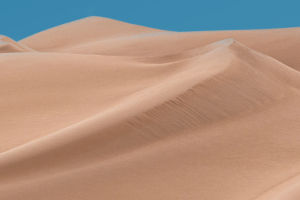You might know that only 10% of an iceberg is visible above the water's surface, but did you know they are old? Like, really old? And that as many 40,000 icebergs break off their glaciers every year — although they don't all make it to our shores. Here are some iceberg facts that might blow your mind.
1.How do icebergs form?
Icebergs are edges of glaciers that have broken off and slipped into the ocean. Glaciers form on land by snow building up over thousands of years. Each layer of snow compresses those below until, 60 to 70 metres down, glacial ice forms. Glaciers then “flow“ or “creep“ towards the ocean under their own weight, and eventually slip into the ocean. The glaciers of western Greenland flow at speeds of up to seven kilometres a year, among the fastest moving in the world. After slipping into the ocean, the bergs float in frosty Arctic bays melting slowly, if at all, until passing through the Davis Strait and into the Labrador Current which carries them south into Iceberg Alley. Once they head south, they rarely last more than one year.
2.How many icebergs are there?
Every year about 40,000 medium- to large-sized icebergs break off, or calve, from Greenland glaciers. Only about 400-800 make it as far south as St. John’s, but these numbers can vary greatly from year to year. The chances of seeing icebergs in a particular area depend on the number of bergs, wind direction, ocean currents and temperatures, and the amount of sea ice, or pack ice. Sea ice protects icebergs from the battering of waves and helps them last longer. Years of little sea ice cover are often years of few icebergs along Newfoundland’s coast. Also, there may be areas where you can’t see any, but 100 kilometres up the coast there might be dozens, so be prepared to travel around. And remember that icebergs are constantly on the move.
3.What causes the streaks and colours in icebergs?
As glaciers creep over land, meltwater fills the crevasses and later freezes, creating clear, bubble-free ice. This shows up as bluish streaks in icebergs because of the light scattering characteristics of pure ice. Sometimes airborne dust from volcanic eruptions, or the wind, falls on a glacier and becomes trapped inside, forming a noticeably darkened brown or black layer. But because most volcanoes are south of glaciers and winds from the south rarely mix with Arctic air masses, there are very few pollutants in the ice.
4.How fast do icebergs move?
Icebergs don’t have a consistent speed. There are many factors that contribute to the speed of an iceberg, like size, shape, ocean currents, waves, and wind. These forces also contribute to the berg’s irregular path, which is equal to two to three times the distance it would travel if it were heading in a straight line - allowing it to drift south for over a week or so. The average drift speed is around 0.7 km/h, although speeds greater than 3.6 km/h have been recorded.
5.What is the largest iceberg recorded?
In the Northern Hemisphere, the largest iceberg on record was encountered in 1882 near Baffin Island. It was 13 km long, 6 km wide, and was about 20 m above water. It weighed over 9 billion tonnes – enough for everyone in the world to drink a litre of water a day for more than 4 years. Icebergs from Antarctica can be many times larger. In 1987 an iceberg, with an area of 6,350 sq. km, calved from the Ross Ice Shelf. It weighed about 1.4 trillion tonnes and could have provided everyone in the world with 240 tonnes of pure drinking water.


